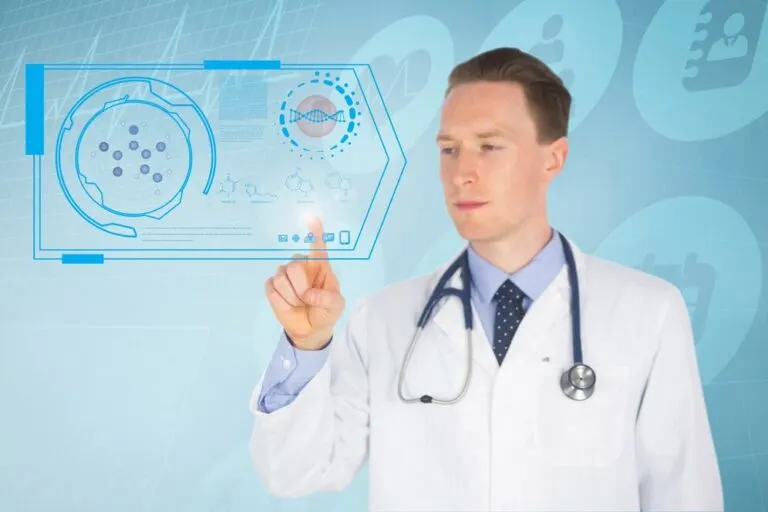Designing User-Friendly Interfaces for Healthcare Applications
1. Importance of User-Friendly Interfaces in Healthcare
1.1 Understanding the Impact of Interface Design on Healthcare Delivery
A user-friendly interface is like the warm hug your grandma gives you—comforting, straightforward, and exactly what you need. In healthcare, well-designed IT solutions, software development, and managed IT services enhance efficiency and care delivery. With strong cybersecurity, cloud computing, and network security, IT consulting ensures seamless IT support and data security for better outcomes.
1.2 Benefits of User-Friendly Interfaces for Patients and Healthcare Professionals
For patients, a user-friendly interface can turn navigating a complex healthcare system into a breeze, reducing stress and confusion. Healthcare professionals benefit from interfaces that streamline their workflows, allowing them to focus on what they do best – caring for patients.

2. Understanding User Needs and Behaviors

2.1 Conducting User Research and Personas Development
User research is like detective work—uncovering needs, preferences, and pain points to create effective solutions. In IT consulting and software development, building personas ensures IT solutions and managed IT services meet specific user needs. Strong cybersecurity, cloud computing, and network security enhance IT support and data security for seamless experiences.
2.2 Mapping User Journeys and Identifying Pain Points
Picture this: you’re on a journey to find the best pizza in town, but all the signs are in a foreign language. Frustrating, right? Similarly, mapping user journeys helps you understand how users interact with your interface and pinpoint where they might get stuck or confused.
3. Best Practices in Healthcare Interface Design
3.1 Design Principles for Healthcare Applications
In healthcare interface design, simplicity is key—clear typography, intuitive layouts, and smart color use boost usability. Through IT consulting and software development, designers create IT solutions that support better user experiences. Combined with cybersecurity, cloud computing, and data security, managed IT services ensure healthcare systems remain efficient and secure.
3.2 Creating Intuitive Navigation and Information Architecture
Imagine trying to find your way out of a maze without a map – not fun, right? In healthcare interfaces, intuitive navigation and logical information architecture guide users seamlessly through the system, helping them find what they need without getting lost in the labyrinth of information.

4. Incorporating Accessibility and Usability Standards
Ensuring Compliance with Accessibility Guidelines
Accessibility is a must-have in healthcare design, ensuring inclusive IT solutions and equal access for all users. With IT consulting, software development, and managed IT services, organizations build compliant systems backed by strong cybersecurity and data security.
User Testing for Usability and Accessibility
User testing is like having a friend taste-test your cooking before serving it to guests – you want to catch any potential issues before they become a problem. Testing for usability and accessibility allows you to gather valuable feedback from real users and make informed decisions to improve the overall user experience.
5. Enhancing Patient Engagement and Experience
Personalization and Tailoring of User Interfaces
When it comes to healthcare applications, one size does not fit all. Personalization is key. Just like a good relationship, the interface should adapt to the unique needs and preferences of the patient. From font sizes for easy reading to customizable settings, tailoring the user experience can make a world of difference in engagement levels.
Integrating Feedback Mechanisms for Continuous Improvement
Feedback isn’t just for Yelp—it’s vital for refining healthcare apps through continuous improvement. Integrating feedback into IT solutions, software development, and IT services ensures user needs are always addressed. Supported by IT consulting, cloud computing, and data security, managed IT services deliver secure, evolving user experiences.
6. Considerations for Mobile Healthcare Applications
Responsive Design for Various Devices and Screen Sizes
Mobile healthcare apps need to be as flexible as a yoga instructor. With the multitude of devices and screen sizes out there, responsive design ensures that the interface looks sleek and functions smoothly, whether it’s on a giant tablet or a tiny smartphone. No more awkward pinching and zooming – just seamless usability across the board.
Utilizing Mobile Features for Enhanced User Experience
Mobile features like GPS tracking and push notifications elevate healthcare apps, offering a personalized, pocket-sized health assistant. Through software development and IT consulting, businesses craft interactive IT solutions that enhance user engagement. Backed by cloud computing, data security, and managed IT services, these apps remain secure, reliable, and always connected.
7. Testing and Iterating User Interfaces for Optimal Results
User Testing Methods and Analysis
Testing, testing, 1, 2, 3 – it’s not just for soundchecks. User testing methods like surveys, focus groups, and heatmaps can provide invaluable insights into how users interact with the interface. By analyzing this data, designers can pinpoint pain points, preferences, and patterns to inform intelligent design decisions that put user needs front and center.
Iterative Design Process for Continuous Optimization
Rome wasn’t built in a day, and neither is a user-friendly healthcare app—software development thrives on iteration, testing, and refinement. An iterative approach powered by expert IT consulting ensures the interface evolves with user needs and expectations. Incorporating feedback into IT solutions and IT services allows healthcare apps to remain relevant and effective.
With the integration of cloud computing, apps become more responsive and scalable for users across platforms. Managed IT services help maintain performance and updates, keeping everything running smoothly behind the scenes. Robust cybersecurity and data security safeguard sensitive patient data, building trust and compliance.
Network security ensures that all systems remain connected and protected, especially in remote or multi-location care environments. Ultimately, user-centric design backed by strong IT support drives innovation, improves health outcomes, and modernizes patient care experiences.



